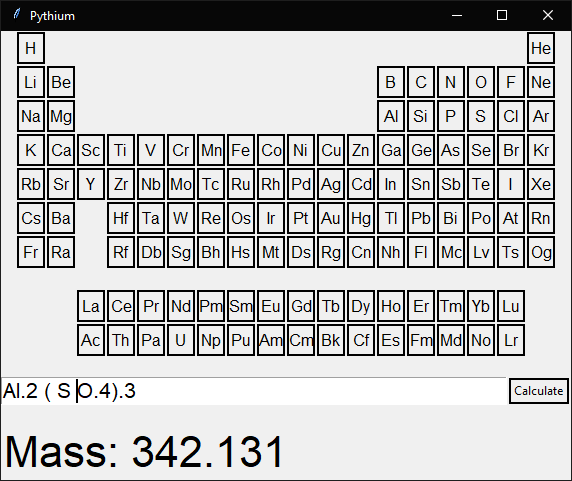Pythium is a small utility for a university chemistry class. It calculates masses for inputted chemical formulas.
Depends on Python 3 or later (3.7.0 tested)
Run pythium.py to pull up the main window. There is a
periodic table of the elements, a text entry box, a calculate
button, and a result field.
Pythium can be used with both mouse and keyboard.
The mass of a element is accessed by typing its symbol.
Capitalization doesn't matter, but spacing does. After each
symbol, type a space. For example, sodium chloride's mass can
be obtained by typing Na Cl in the text entry field, then
pressing enter. Additionally, na cl will also suffice.
Pressing Enter calculates the mass of the compound.
To enter subscripts, immediately after the symbol place a dot
and then enter the desired number for the subscript. For
example, the formula for water is H.2 O or h.2 o.
Subscripts can be used for parenthesized areas as well. For
example, the formula for aluminum sulfate is Al.2 (SO.4).3.
Note that parenthesized areas must be followed by a . subscript
Leading coefficients can be specified by making the first value
of the an entry a number. Multiple entries can be summed by using
a + between them. For example, 2Fe.2 O.3 + 3C.
Masses of elements can be added by clicking on the respective
cell. If the element clicked is the same as the previous, it will
be subscripted instead of appended. Pressing the hydrogen cell
twice will give H.2.
